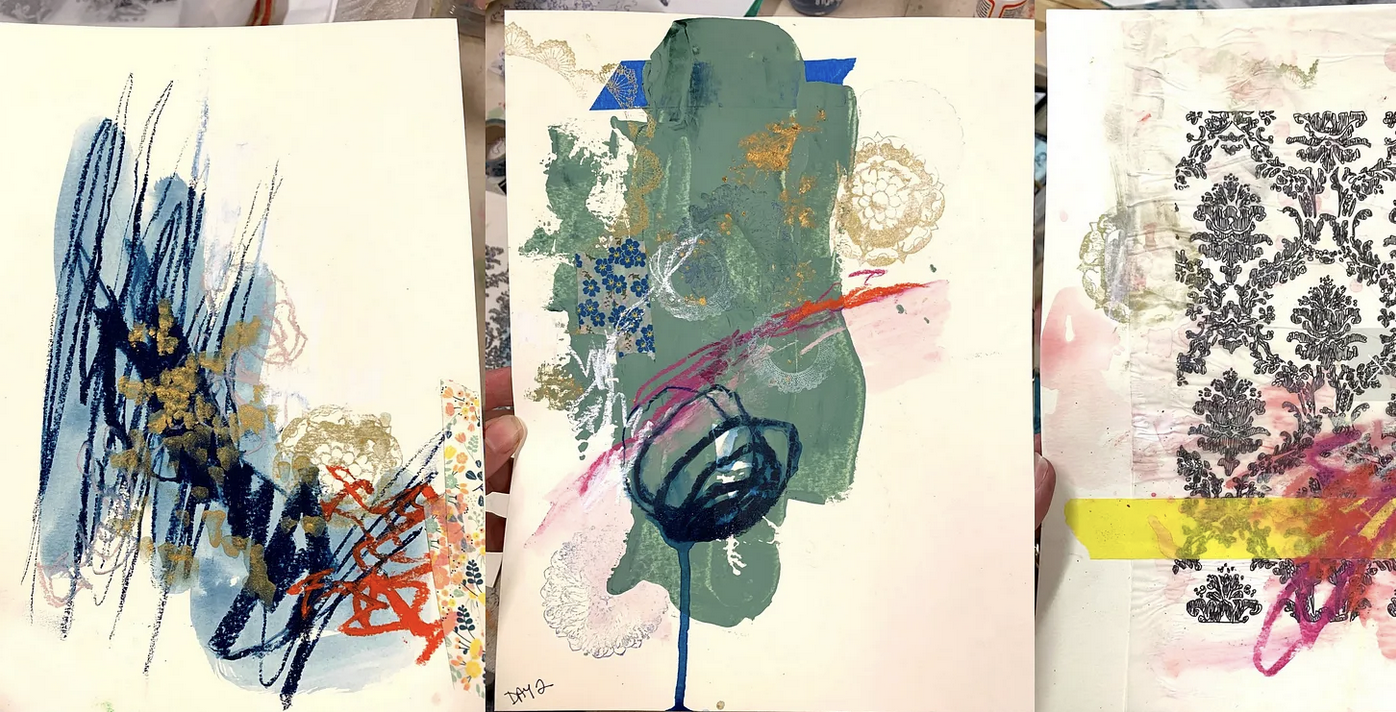Why I Was Designed to Diverge
How My Neurodivergent Mind Became My UX Superpower
“100 Day Project” © 2022 Kathryn Neale Studio
A year ago, I was told I was "neurodivergent." Like many overwhelmed moms, I filed this revelation away and moved on with life. It took my son's anxiety to force me back to this discovery—and I'm grateful it did.
The Resistance to Labels
I'll be honest: I've been resistant to diving into neurodivergence. Once you put a "label" on yourself, you risk being seen through that lens forever. We're all complex, nuanced beings, and I hate being put in boxes.
But the more I researched—especially learning that women often present as ADD rather than ADHD—light bulbs started going off.
Is this why I've felt that weird restlessness my entire life? Why I can't fully concentrate on anything that doesn't interest me? Why I've always "flitted" from project to project, feeling huge resistance to finishing things?
I used to call myself a "dreamer," full of creativity and imagination. But the reality was harder: I'd daydream about fantastical possibilities, then come crashing back to earth, flattened and unsettled. Something never felt quite right. I felt different, and I couldn't figure out why I couldn't just be "normal."
The Overwhelm is Real
Translating these scattered thoughts into everyday life—managing a household, career, marriage, kids—makes everything exponentially worse. The physical stuff: laundry piles, unread books, dishes, endless cleanup. The digital chaos: 46 browser tabs open right now, saved LinkedIn posts I'll never find, millions of screenshots of inspiration, research spanning politics to conspiracy theories to UX workflows.
My husband would say, "Get over it, that's LIFE! Everyone deals with this stuff!"
But here's what I'm learning: maybe not everyone's brain works like this.
When Chaos Became Clarity
My transformation happened organically when I was thrown into the deep end of a massive DOD contract. As the sole UX designer on a 90+ person development team working on mission planning applications for the Air Force, I was immediately overwhelmed.
The application looked like a blank HTML page from 1999. I had to learn 900+ military acronyms, understand complex operations across multiple lines of business, teach both development teams and government stakeholders what real UX means, and somehow create a cohesive design system—all while navigating "agile" processes that weren't remotely agile.
They told me to give myself six months to understand the military language enough to contribute meaningfully in meetings. They were right.
But here's what I discovered: my undiagnosed ADD became an incredible asset.
The Superpower Hidden in Plain Sight
The constant context-switching that usually scattered my focus? It allowed me to bounce between macro-level strategy discussions and minute button details without breaking down. My comfort with abstract and unknown elements—honed through years of art practice—helped me navigate the daily reality of complex, evolving requirements.
Most importantly, my divergent thinking began making connections others couldn't see. What appeared to be completely separate workflows across different military operations were actually variations of the same fundamental patterns. Everyone was siloed, thinking their processes were unique. They weren't.
The ability to see multiple problems simultaneously and collaborate across diverse personalities to find solutions became my game-changer. My team evolved into the "vision" team, working with architects and product managers to identify risks and push creative boundaries.
Reframing the Narrative
I told my boss during hiring that I got unmotivated quickly when bored. He assured me I'd never be bored. He was 100% accurate.
What I once saw as scattered focus, I now recognize as pattern recognition across complex systems. What felt like restless energy became the drive to innovate and connect disparate ideas. The overwhelm I experienced wasn't a bug—it was a feature, pushing me to find better ways to organize and synthesize information.
Moving Forward with Intention
I'm not perfect, and sometimes this neurodivergent brain is frustrating. But at this point in my life, I'm grateful for my unique mind. I'm taking this new confidence into my next chapter focused on automation and AI at NRO/NGA.
The same divergent thinking that helps me see patterns across military operations is now helping me understand how AI can augment human creativity rather than replace it. The overwhelm I once fought against is teaching me to design systems that work with our natural cognitive patterns, not against them.
Maybe that restless energy wasn't something to fix—maybe it was something to harness.
What aspects of your work style have you reframed from weakness to strength? I'd love to hear your thoughts in the comments

